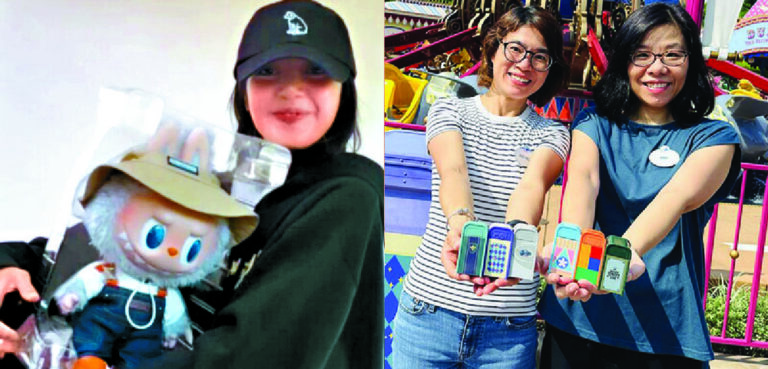What does a famous Nordic elfin monster have in common with Hong Kong, and when is a dustbin not a dustbin?
Unless you’ve been living under a rock, you’d know that Labubu is a plush doll made by China’s toy firm Pop Mart that’s taken the world by storm (you may even have one accessorizing your Birkin).
But do you know that the adorable collectible was created by Hong Kong-born Lung Ka-sing? Or that Hong Kong Disneyland’s blind box of trash can figurines was created by talented local youngsters Amy and Rachel? Inspired by trash cans in the park, they turned dustbins into art!
Hong Kong has set its sights on becoming a regional force in intellectual property.
While IPs cover a vast spectrum, the anime, comics, games and novels or ACGN market – which includes plushies, figurines, keychains and the like and is more commonly known as the goods economy in China – is a multi-billion-dollar gold mine waiting to be tapped.
Two of Hong Kong’s ministers were recently in Beijing seeking inspiration on how to turn the city into a regional IP force.
Earlier in the month, Financial Secretary Paul Chan Mo-po visited a major enterprise to learn all about IP development and management, and last week Secretary for Commerce and Economic Development Algernon Yau Ying-wah toured a collectible IP toymaker that has found fame globally, after meeting National Intellectual Property Administration Deputy Commissioner Zhang Zhicheng to discuss deeper co-operation.
While the names of the companies were not revealed, Labubu and Pop Mart – which makes the best-selling doll under license from Lung – could not have been far from their minds.
Labubu is part of The Monsters series of blind box figurines and has become a smash hit not just among millions of young fans but also even among the rich and famous like Black Pink’s Liza, Singaporean actress Jeanette Aw and Thailand’s Araya Alberta Hargate, to name a few.
Labubu has even become a global mascot for tourism with fans taking selfies of themselves with “Merlion Labubus” – created specially for Singapore – at landmarks like the famed Merlion statue and Jewel Changi Airport.
While Labubu has conquered the world, Pop Mart’s bestseller is Molly, created by none other than local designer Kenny Wong.
Lung, who emigrated to the Netherlands at the tender age of six, is now reported to be working with Wong to enrich the Molly line of collectibles.
The word guzi means goods in Chinese, and the guzi or goods economy was worth 100 billion yuan (HK$107 billion) in China last year, driven by an insatiable emotional appetite among Chinese youth for all things collectible.
And fortunes are being made: Pop Mart’s profit rose nearly 190 percent to 3.1 billion yuan last year, and its stock price has skyrocketed 430 percent in the past 12 months.
Can Hong Kong join the party?
We have a vast pool of creative talent that only needs to be nurtured, and the market is huge.
Local artists have already created popular characters and mascots such as Chocolate Rain, McDull and the Big Waster for the Environment and Ecology Bureau while Hong Kong’s comics were well-known in their heyday.
Events such as Animation-Comic-Game Hong Kong are packed every year
Disneyland has its Mini-Trash Can Mystery Figurine blind box so why can’t the Kai Tak Sports Park and city’s museums ask young creatives to design IPs for them? This would generate more revenue while nurturing talent.
Chan has proposed funding for 30 cultural IP projects over the next five years and offering tax breaks for companies buying IP rights. But why stop there? Let’s encourage our artists to dream up IPs rich in local flavor and dish out a little cash to spark an ACGN boom.
If Singapore can have its very own Labubu, why not one specially for Hong Kong?
Let our young creatives shine and develop IP that is distinctly local for a global audience.


